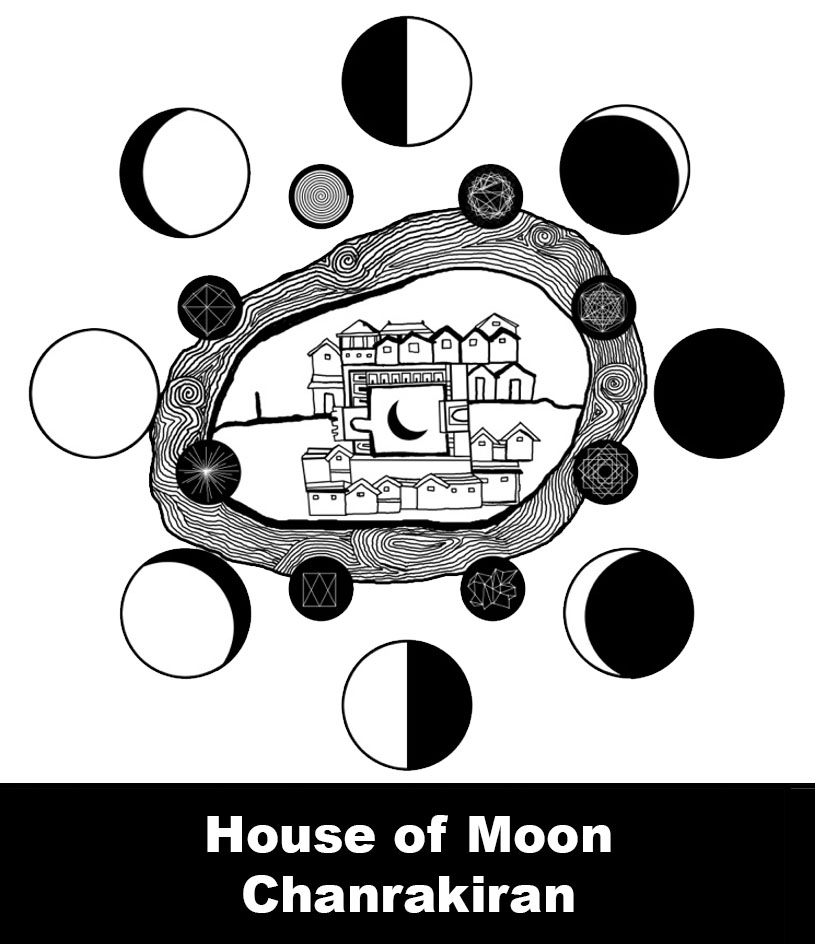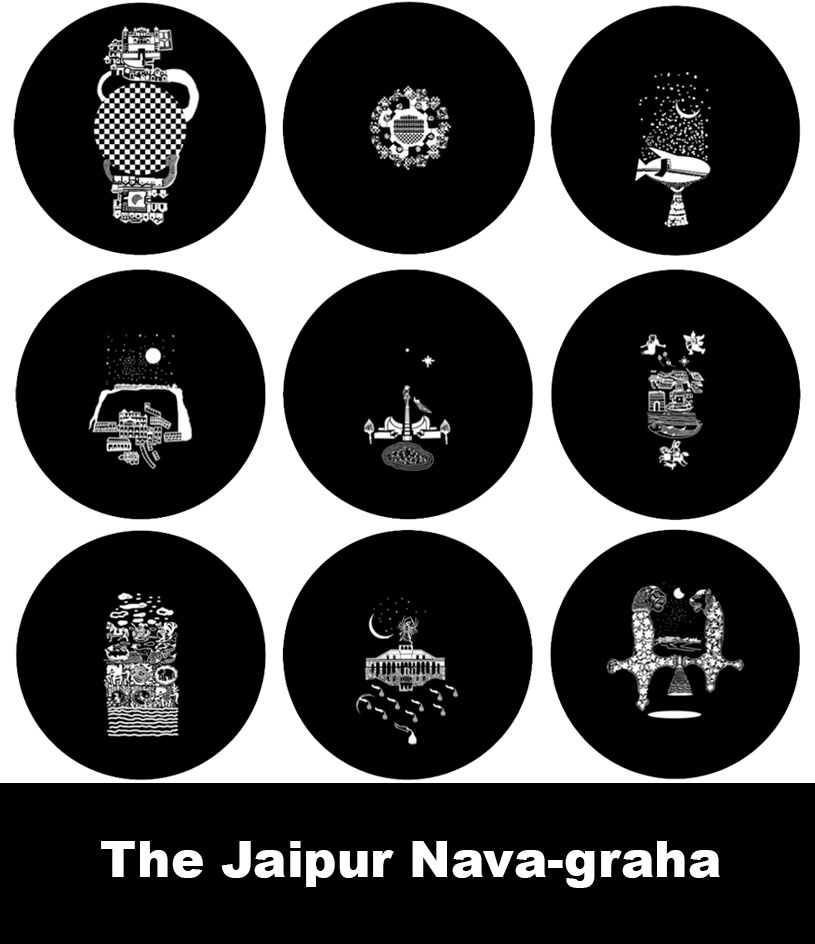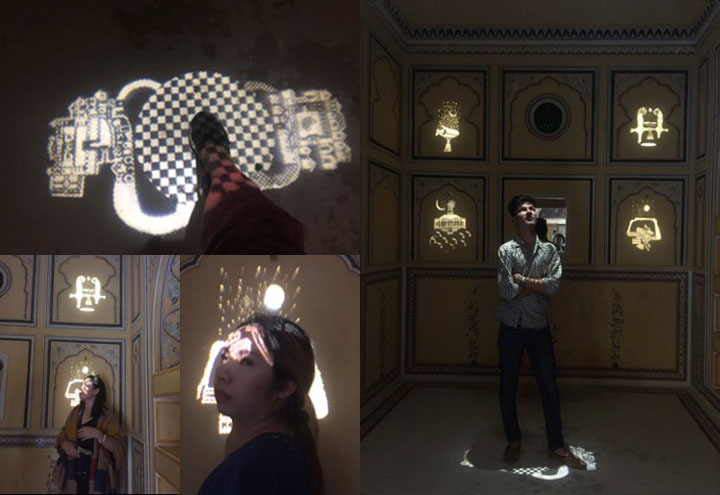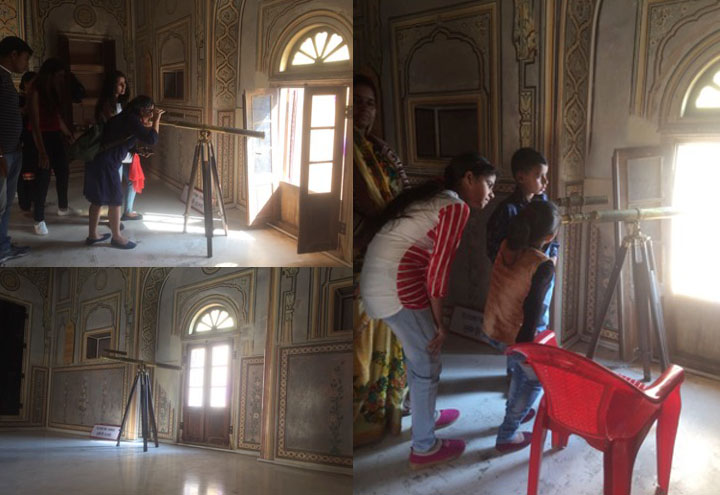I am Blur | main dhundh hoon | मैं धुन्ध हूँ
Nahargarh fort Jaipur, 2018
Part of the Sculpture Park 2018
Imitating Atmosphere वायुमंडल का अनुकरण curated by Shreyas Karle and Hemali Bhuta
Light installation using Gobo projectors, telescope, plastic carpet and painted Qanaat.
Light designer: Rahul Sharma
Qanaat maker: Omi Sharma
Qanaat Painter: Puran Mal Nakham & Makhan Daiyama
Project Assistant: Hritik Chhajer
Research help- Palace museum curators and researchers:
Sandeep Sethi, Rima Hooja, Aparna Andhere
Telespcope tour guide: Rajesh Khandelwal
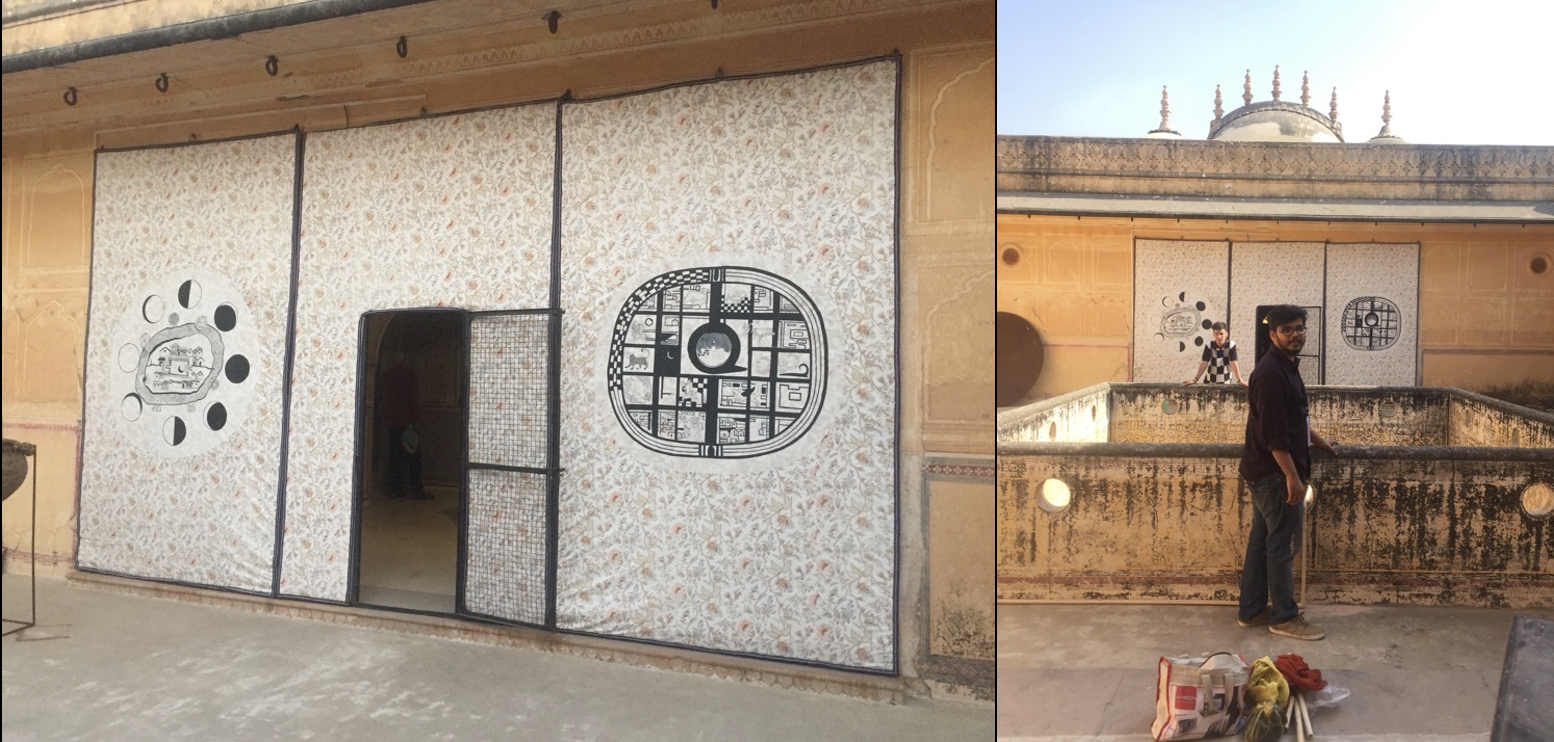
This is a tale of time that extends to past times and future times, about two friends Chandra and Surya who love playing ‘hide and seek’. Both great travelers, one’s personality is more romantic, while the other’s is tempestuous. But both friends loved to show off their powers in the absence of the other. Rarely did one see them coming together in the same plane sometimes they did and stood in front of each other to cast a shadow on each other.
Both Chandra and Surya embody both genders. And their actions emanate their gender from time to time, as they circle the world in 24 parts. This tale is about their actions, their relationship to each other, and their display of power on the city of Jaipur. As they chase and spy on each other in an effort to sabotage the others’ plans, they use ‘astra’s or weapons on each other, each action defined as a particular element of gender. Battling each other through time, some myths claim that their challenges have turned them into bitter rivals as well as passionate lovers.
Today, above the city of Jaipur, one can see light bursts that are caused by the violence or coming together of their strange love-hate relationship. Of course, certain opportunists back on Earth have noticed this and taking advantage of the situations, have created their own companies to light up the city. People still believe they are circling and chasing each other above Jaipur. Today that vision is a blur. Few locals believe that if one carefully looks, one can see engaged in the everlasting tussle above Jaipur. But alas, the artificial lights of the city cast heavy shadows, which shroud Chandra and Surya. These shadows cannot be touched.
The work is about the relationship between sunlight and moonlight in the city of Jaipur. The city is designed as per the planetary system. The Nav-graha (nine planets) that can be seen via the telescope (in this room), tells us the story of the planning of the walled city.
I am also narrating an oral story about the space that lies above the ‘Nava-graha’ city – the stories of the migrating artisans who built this city. These tales are not “authentic” and have many versions in their telling across the years. Thus for me it is like the story of ‘Ro-sho-mon’ (multiple conflicting or differing versions, perspectives, or interpretations of the same plot). These stories are juxtaposed with the stories of the two celestial friends – Surya and Chandra. The astrological sciences that rule the planning of the city; and the wafting oral stories of its skilled builders cannot be separated from each other – they are but two sides of the same coin.
The details of the installation:
In the facade of this section you see a Qanaat that introduces the House of Moon and Sun like a ‘mandala’. When you step into the interior space of this section of the palace, it is divided into 3 rooms. The central room focuses on the Nava-graha of the city. The two rooms flanking it are dedicated to the Moon and the Sun and their relationship to a few sites in the city, which are:
Jal Mahal, Nahargarh Fort and Palace, Amer Fort their stories and relationship to the Moonlight.
Jantar Mantar, Hawa Mahal, Sanganeer and the Jaipur city and its equation to the Sunlight.
*Qanaat क़नात قنات : the side of a tent, an external screen of a tent, a screen
